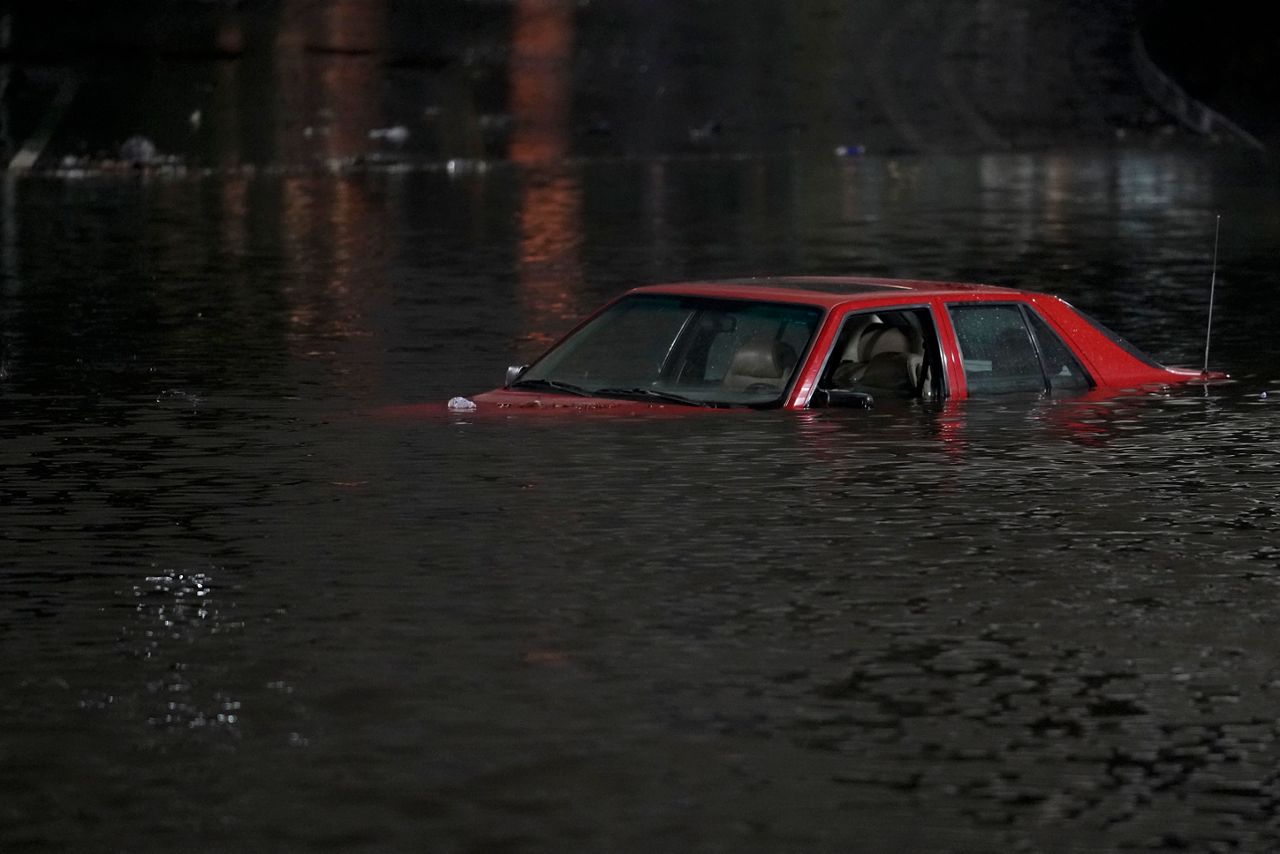From drizzle to downpours, driving in the rain could be difficult and dangerous if you are not careful. According to U.S. Department of Transportation Federal Highway Administration, over 3,400 people are killed and over 357,300 people are injured in rainfall-related crashes.
We want you to understand the hazards of driving in the rain and how you can drive defensively in the elements. AAA says wet pavement contributes to more than one million traffic crashes each year.
Before driving in the rain
Before you drive in the rain, it’s important to make sure your vehicle is prepared. You want to check your windshield wipers and make sure they don’t leave streaks and clear any rain on a single swipe.
Plus, you want to check if all your headlights, taillights, brake lights and turn signals are working as well.
Next, you want to check your tire tread depth. The tire tread and inflation of your tires are important in maintaining traction on wet roads.
You can check the tread by using a quarter. If you turn it upside down and dip it into the tread of a tire and you can see the entire head of the president, that means you need to replace them.
You also need to check the tire pressure, as well.
Driving in the elements
When driving in the rain, it’s important to leave room between vehicles. Safety experts suggest following the two-second rule to maintain a safe distance from the car in front of you. In addition, the National Weather Service (NWS) suggests adding an extra two-seconds when you’re driving in heavy rain.
The NWS also say to be careful during the first half hour of rainfall because grime and oil on the road could mix with water to make them slippery. Check out our “Weather Explained: Slick roads after a dry spell” for more information.
According to AAA, “with as little as 1/12 inch of water on the road, tires have to displace a gallon of water per second to keep the rubber meeting the road.” To navigate driving in the rain, it’s best to stay toward the middle lanes, since water pools in the outside lanes. Plus, drive at the speed to correspond to the amount of rain on the roads.
Beware of hydroplaning
Hydroplaning is one risk of driving in the rain. Hydroplaning happens when your vehicle glides on top of a thin film of water and your tires lose contact with the ground.
It only happens in a few seconds, but it can feel like your vehicle is veering on its own. You should avoid hard braking and sharp turns. AAA says pressing the breaks will make hydroplaning worse and cause you to swerve out of your lane.
To reduce your risk of hydroplaning, slow down, turn off cruise control and don’t panic.
If you feel like your hydroplaning, ease your foot off the gas to regain control of the vehicle and pull over and park your car until the rainfall lightens.
If you feel your card is skidding, don’t panic and avoid hard braking. Just look and steer in the direction you want your car to go.
Turn Around, Don’t Drown®
Now, if water is over the road because of heavy rain, you should never drive through it. The Centers for Disease Control and Prevention says that over half of all flood-related drownings happen when a vehicle has driven into flood water.
Whenever you encounter a flooded road, practice Turn Around, Don’t Drown®.
The NWS says it takes 12 inches of rushing water to carry away most cars and just 2 feet of rushing water can carry away SUVs and trucks.
An empty vehicle is surrounded by floodwaters on a road in Oakland, Calif., Wednesday, Jan. 4, 2023. (AP Photo/Godofredo A. Vásquez)
So it’s important to beware and drive defensively in the rain and avoid any hazards if you can.
Our team of meteorologists dives deep into the science of weather and breaks down timely weather data and information. To view more weather and climate stories, check out our weather blogs section.

